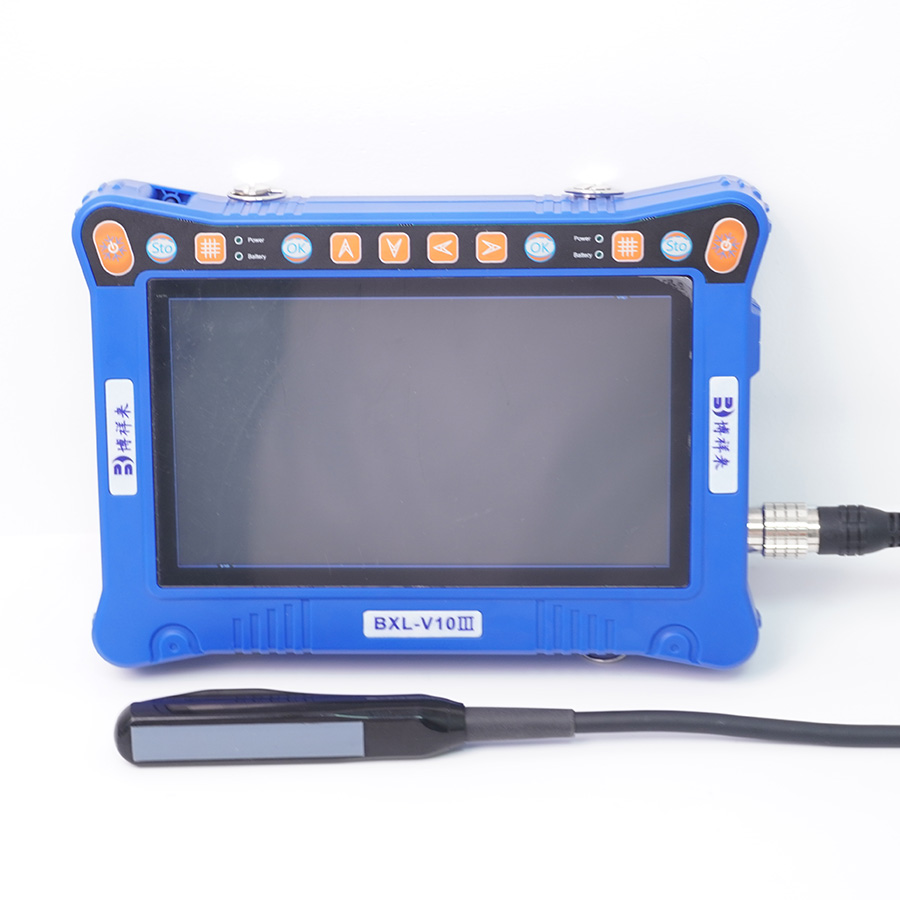The term "ultrasound" applied to sound refers to any signal above the frequency of audible sound, and nominally includes any signal above 20,000 Hz. Frequencies used for veterinary diagnostic ultrasound scanning extend to 10 MHz and even higher.
Sounds in the 20-100kHz range are commonly used for communication and navigation by bats, dolphins, and other species. Higher frequencies in the 1-20MHz range are used for Veterinary ultrasound. Such sounds are produced by ultrasound transducers. A wide variety of medical diagnostic applications use the echo times and Doppler shifts of reflected sound to measure the distances to internal organs and structures and the speed at which those structures are moving. Typical is echocardiography, in which moving images of the heart's action are produced in video form with false colors to indicate the speed and direction of blood flow and heart valve movement. Ultrasound imaging near the surface of the body is capable of resolutions of less than 1 mm. Resolution decreases with increasing penetration depth, because lower frequencies must be used (attenuation of waves in tissue increases with increasing frequency.) Using longer wavelengths means lower resolution, because the maximum resolution of any imaging process is proportional to the wavelength of the imaging wave.

Bats and Veterinary Ultrasound
Bats use ultrasound for navigation. Their ability to catch flying insects while flying at full speed in the dark is astounding. Their sophisticated echolocation allows them to distinguish between moths (dinner) and fallen leaves.
There are about 800 species of bats divided into 17 families. The ultrasonic signals used by these bats fall into three major categories. 1. Short clicks, 2. Frequency sweep pulses, and 3. Constant frequency pulses. There are two suborders, Megachiroptera and Microchiroptera. Megas use short clicks, Micros use the other two. Tongue clicks produce pairs of clicks about 30ms apart, with 140-430ms between pairs. (Sales and Pye, Ultrasonic Communication in Animals). Frequency sweep clicks range from 10-60 kHz. One species of bat, the verspertilionidae, has a frequency sweep pulse of 2.3 kHz to 78 kHz in 39 milliseconds. The pulses are emitted between 8 and 15 times per second, but can increase to 150-200/s when doing tricky maneuvers.
Whale Calls
Orcas produce a wide variety of click, whistle, and pulse calls. Their frequencies vary between 1 and 25 kHz. Individual pods of whales have their own unique call patterns, similar to those of songbirds. Some such calls are known to remain stable for 10 years. Humpback whales produce a wide variety of moans, snorts, and groans that repeat to form sounds we might call songs. The frequencies of these songs range from about 40Hz to 5kHz. Singing whales are usually solitary males who display it in shallow bottom areas where sound travels well. They are interpreted as territorial and mating calls. Whales are known to produce some very intense low-frequency sounds that can stun or disorient small fish. Bottlenose dolphins produce sounds between 7 and 15 kilohertz that vary in pitch.
The dolphin's click comes from a small knob near its blowhole. There are no vocal cords.








